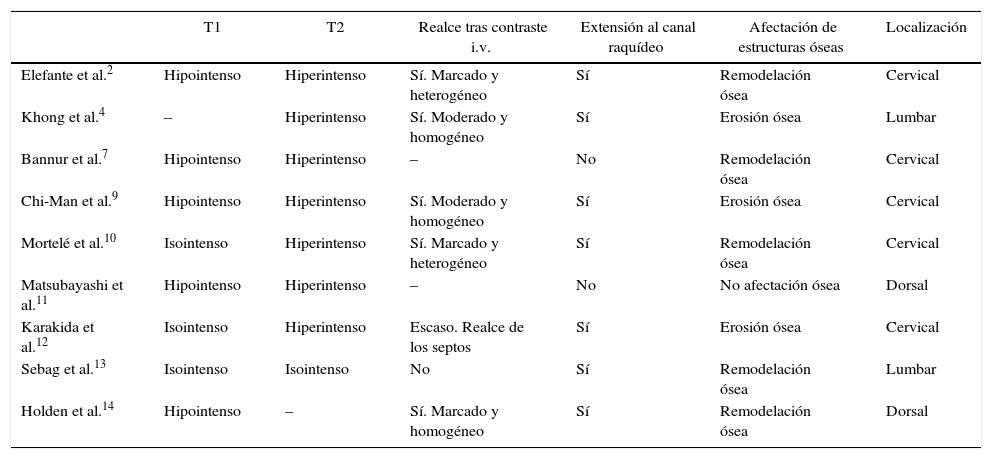El cordoma es un tumor raro de lento crecimiento, derivado de remanentes de la notocorda. La mayoría se localizan en la base del cráneo y en la región sacrococcígea, mostrando una localización cervical en solo el 6% de los casos.
Presentamos el caso, poco frecuente (se han reportado menos de 10 en la literatura), de un cordoma paravertebral izquierdo, localizado a nivel de C2-C4, en un varón joven sin antecedentes personales de interés. Los hallazgos radiológicos sugerían que se trataba de una neoplasia de crecimiento lento, de predominio quístico, que erosionaba estructuras óseas y englobaba a la arteria vertebral izquierda. Se planificó exéresis quirúrgica y en el análisis de la pieza se observó proliferación celular con estroma de aspecto mixo-condroide, células epitelioides y fisalíferas (PAS+), todo ello compatible con cordoma.
Chordoma is a rare, slow-growing tumour arising from remnants of the notochord. It is most often located in the base of the skull and the sacrococcygeal region, being located in the cervical region in only 6% of cases.
A rare case is presented of a left para-spinal chordoma, of which less than 10 cases have been reported in literature. It was located at C2-C4 level in a young male with no personal history of interest. Radiographic findings suggested that this was a slow-growing tumour, of cystic dominance, which eroded the bone structures and encompassed the left vertebral artery. Surgical excision was performed, and in the analysis of the surgical piece, cell proliferation was observed, with a stromal myxoid-chondroid appearance, epithelioid and physaliphorous (PAS+) cells, all of them compatible with chordoma.
Article

If it is the first time you have accessed you can obtain your credentials by contacting Elsevier Spain in suscripciones@elsevier.com or by calling our Customer Service at902 88 87 40 if you are calling from Spain or at +34 932 418 800 (from 9 to 18h., GMT + 1) if you are calling outside of Spain.
If you already have your login data, please click here .
If you have forgotten your password you can you can recover it by clicking here and selecting the option ¿I have forgotten my password¿.









